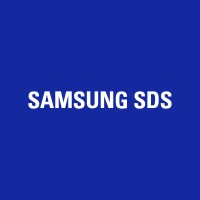
Fujitsu
Fujitsu is a global leader in digital services that transform organizations and the world around us. We aim to make the world more sustainable by building trust in society through innovation.



Fujitsu is a global leader in digital services that transform organizations and the world around us. We aim to make the world more sustainable by building trust in society through innovation.

Samsung SDS provides cloud computing and digital logistics services. We build an optimized cloud environment with Samsung Cloud Platform specialized for businesses, provide all-in-one management service based on 38 years of expertise in each industry, and boost work efficiency and customer service with our SaaS solution, which proved successful in many use cases. Your only partner to present a reasonable answer to the complex challenge of digital transformation is Samsung SDS. Samsung SDS prides itself in leading IT innovation in Korea for over years while spending every year evolving to meet the needs of our clients and changing times. Our constant effort put us 21st in 2021 Gartner Global IT Service Business, and 1st in Manufacturing IT. We have also been named the 12th Most Valuable Global IT Services Brand by Brand Finance UK in 2023, showing how we have grown into a global top-tier company. Samsung SDS offers cloud-based digital transformation services with distinguished cloud technology and rich industry experience. We are recognized by global consultants such as Gartner, IDC, and Frost & Sullivan in their lists of Managed Cloud Services, Cloud Security, and AI Industry as a specialized cloud service company supporting clients' digital innovation.
Security & Compliance Standards Overview












No incidents recorded for Fujitsu in 2025.
No incidents recorded for Samsung SDS in 2025.
Fujitsu cyber incidents detection timeline including parent company and subsidiaries
Samsung SDS cyber incidents detection timeline including parent company and subsidiaries
Last 3 Security & Risk Events by Company
Angular is a development platform for building mobile and desktop web applications using TypeScript/JavaScript and other languages. Prior to versions 19.2.16, 20.3.14, and 21.0.1, there is a XSRF token leakage via protocol-relative URLs in angular HTTP clients. The vulnerability is a Credential Leak by App Logic that leads to the unauthorized disclosure of the Cross-Site Request Forgery (XSRF) token to an attacker-controlled domain. Angular's HttpClient has a built-in XSRF protection mechanism that works by checking if a request URL starts with a protocol (http:// or https://) to determine if it is cross-origin. If the URL starts with protocol-relative URL (//), it is incorrectly treated as a same-origin request, and the XSRF token is automatically added to the X-XSRF-TOKEN header. This issue has been patched in versions 19.2.16, 20.3.14, and 21.0.1. A workaround for this issue involves avoiding using protocol-relative URLs (URLs starting with //) in HttpClient requests. All backend communication URLs should be hardcoded as relative paths (starting with a single /) or fully qualified, trusted absolute URLs.
Forge (also called `node-forge`) is a native implementation of Transport Layer Security in JavaScript. An Uncontrolled Recursion vulnerability in node-forge versions 1.3.1 and below enables remote, unauthenticated attackers to craft deep ASN.1 structures that trigger unbounded recursive parsing. This leads to a Denial-of-Service (DoS) via stack exhaustion when parsing untrusted DER inputs. This issue has been patched in version 1.3.2.
Forge (also called `node-forge`) is a native implementation of Transport Layer Security in JavaScript. An Integer Overflow vulnerability in node-forge versions 1.3.1 and below enables remote, unauthenticated attackers to craft ASN.1 structures containing OIDs with oversized arcs. These arcs may be decoded as smaller, trusted OIDs due to 32-bit bitwise truncation, enabling the bypass of downstream OID-based security decisions. This issue has been patched in version 1.3.2.
Suricata is a network IDS, IPS and NSM engine developed by the OISF (Open Information Security Foundation) and the Suricata community. Prior to versions 7.0.13 and 8.0.2, working with large buffers in Lua scripts can lead to a stack overflow. Users of Lua rules and output scripts may be affected when working with large buffers. This includes a rule passing a large buffer to a Lua script. This issue has been patched in versions 7.0.13 and 8.0.2. A workaround for this issue involves disabling Lua rules and output scripts, or making sure limits, such as stream.depth.reassembly and HTTP response body limits (response-body-limit), are set to less than half the stack size.
Suricata is a network IDS, IPS and NSM engine developed by the OISF (Open Information Security Foundation) and the Suricata community. In versions from 8.0.0 to before 8.0.2, a NULL dereference can occur when the entropy keyword is used in conjunction with base64_data. This issue has been patched in version 8.0.2. A workaround involves disabling rules that use entropy in conjunction with base64_data.